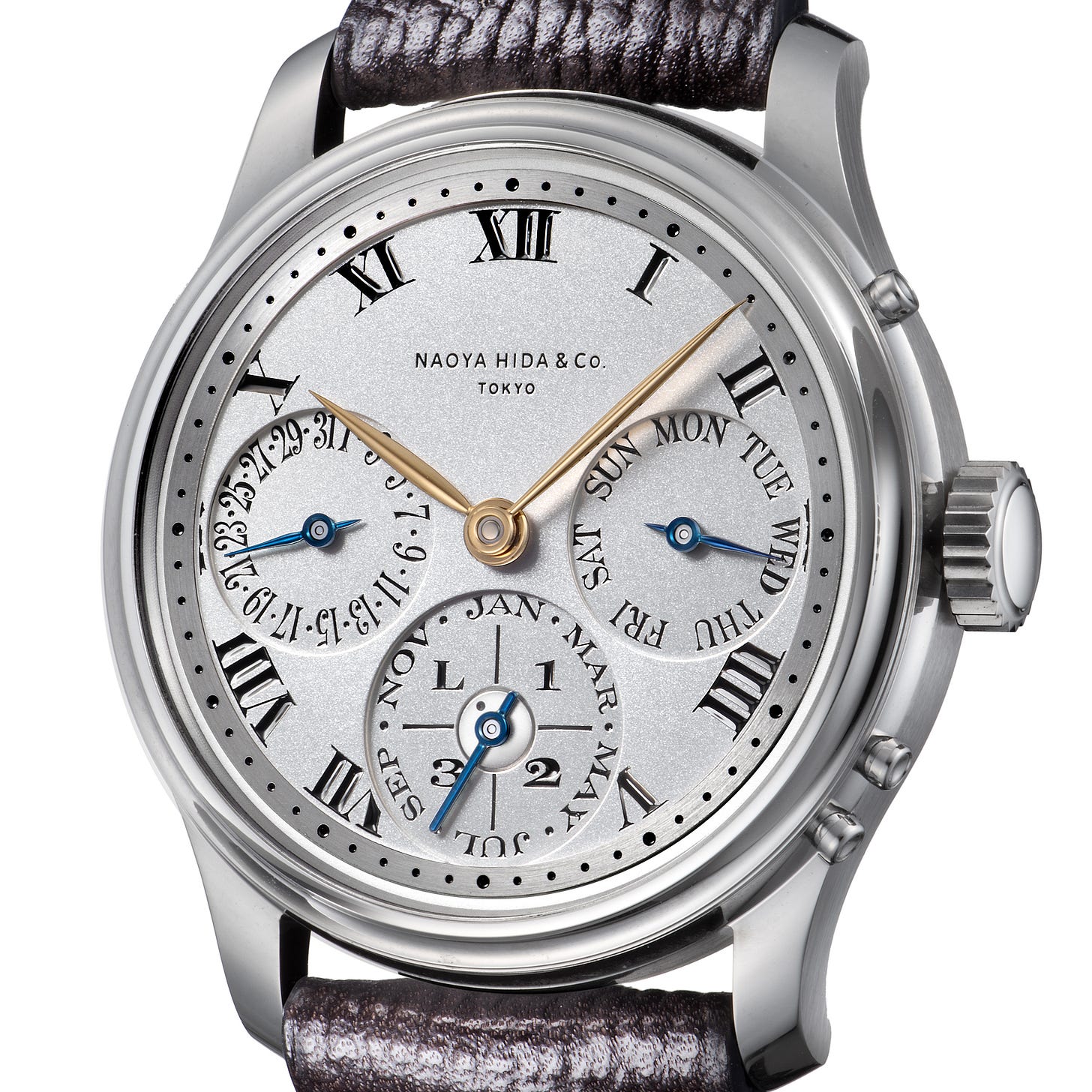Issue 167: Five things we can learn from this year's GPHG
Plus, the controversial allegations that Hans Wilsdorf was a Nazi sympathiser
Hello and welcome back to The Fourth Wheel, the weekly watch newsletter that aims to analyse the industry and do it with a smile - or at least, some bad puns. Right now the industry should be on its holidays; some are, but some are already back and trying to figure out what the hell to expect when their current US stock sells through. It’s been a long year; don’t even think about telling me it’s only August - clearly something has been amiss with the basic passage of time itself, because I know a long year when I feel one. I said last week I wanted to get back to watches, and I’m trying. Geneva Watch Days will serve us up a crop of new releases, and I have some other things lined up for September. In the meantime my eye turns, belatedly, to this year’s GPGH entries. I’m not much concerning myself with who’ll win an award - that really does feel trivial in the current climate - but the awards themselves provide a fascinating lens through which to analyse the world of watches. I’ve got plenty of hard numbers for you, a few decent opinions, and hopefully at least a couple of bad jokes.
The Fourth Wheel is a reader-supported publication with no advertising, sponsorship or commercial partnerships to influence its content. It is made possible by the generous support of its readers: if you think watch journalism could do with a voice that exists outside of the usual media dynamic, please consider taking out a paid subscription. You can start with a free trial!
Here’s a little taste of what you might have missed recently:
You, me and the GPHG
I’ve got something of a love-hate relationship with writing about the GPHG. I’ve spent plenty of time outlining its failings, but I went along last year for the first time in five or six years and it’s hard not to get carried away by the pomp and ceremony of the whole thing. Some of the speeches are always worth turning up for, and I’m not saying my cynicism is so easily melted away, but seeing young watchmakers visibly overwhelmed by the recognition of an award - like Stefan Kudoke or Remy Cools last year - is a reminder that for all its flaws, there’s something here that really can make a difference to people’s lives.
These days, I think the GPHG is most useful as a data resource. It’s a reliable annual marker in our world and you can learn a lot about what’s happening in watchmaking by scrutinising every stage of its convoluted process - arguably more than you learn by looking at the winners, which I think are probably easier to predict than ever1. Here are five things that I learned from the longlist of ‘competing watches’, and some other thoughts that jumped on board along the way.

There are too many watches
This year, 302 watches are in with a chance of winning a GPHG - or at least, being selected for the final 90 - which is the most in its 25-year history. In the last five years, the number of competing watches has risen from 226 in 2020 to 302 this year. In 2024 there were 273, but as recently as 2021 there were just 208. So we’ve seen almost a 50 per cent increase in four years.
Aside from the fact that this means a greater percentage than ever are going to fall at the first hurdle, I think it’s indicative of changes in the industry and changes to the GPHG. In 2020 the GPHG introduced the academy programme, which gave members of ‘the watch community’ the chance to suggest watches for inclusion. In the five years prior to 2020 the number of competing watches hovered pretty steadily around the 200 mark.
The Academy had around 350 members at the outset; this year its number surpassed 1,0002. So there are more people than ever making suggestions - but the watches need to exist to be proposed in the first place. The steep rise in volume matches the proliferation in start-up brands: there are 33 watches entered into the Petite Aiguille category and 47 for the Challenge category. A lot of them are debut brands.
As a side note, as the GPHG makes its money from nominee brands, this will mean a sharp rise in revenue. At CHF 800 per watch, plus CHF 7,000 per shortlisted watch (and CHF 4,000 for clocks) this year’s crop will yield CHF 923,600. Those charges have been flat since 2023, when they increased from CHF 700 and CHF 6,000/5,0003 respectively. I know the GPHG receives funding from other sources so the entry fees are likely a small percentage of its overall revenue, and it spends a lot of money promoting the awards, but I’d like to see what it has planned with the additional income from the last few years.
It’s a global ceremony now
Despite its rigid adherence to some Swiss norms (I wonder if Frank Geelen will be invited back to present an award having used his brief time on stage to lobby the GPHG to carry out proceedings in English last year) the GPHG is becoming a truly international event. That’s borne out by the Academy membership; growth in the ranks is fuelled by an influx of members from the Middle East and Asia. It’s also reflected in the make-up of the competing watches. I counted 97 non-Swiss brands among the 184 represented on the longlist - more than half! I’m sure a disproportionate number of them will be left behind when the shortlist is announced (and we’re about to come onto why that’s really not a problem for some of them) but it was an eye-opening finding for me. Certainly it’s not representative of the watch industry as a whole, where the majority of brands still reside in Switzerland, but it does speak to how easy it has become to start a brand from anywhere, and to how rapidly some countries are developing a strong watch culture, if not a domestic manufacturing industry (yet).
Keep reading with a 7-day free trial
Subscribe to The Fourth Wheel to keep reading this post and get 7 days of free access to the full post archives.





